-
 Bitcoin
Bitcoin $107,352.1067
0.28% -
 Ethereum
Ethereum $2,429.3531
-0.90% -
 Tether USDt
Tether USDt $1.0001
-0.02% -
 XRP
XRP $2.1894
4.62% -
 BNB
BNB $646.7968
0.36% -
 Solana
Solana $147.4290
4.03% -
 USDC
USDC $0.9998
-0.02% -
 TRON
TRON $0.2756
1.52% -
 Dogecoin
Dogecoin $0.1630
1.14% -
 Cardano
Cardano $0.5612
1.18% -
 Hyperliquid
Hyperliquid $37.0580
-0.05% -
 Bitcoin Cash
Bitcoin Cash $496.9410
-0.09% -
 Sui
Sui $2.7318
3.19% -
 Chainlink
Chainlink $13.1503
0.58% -
 UNUS SED LEO
UNUS SED LEO $9.0766
0.55% -
 Avalanche
Avalanche $17.7220
1.46% -
 Stellar
Stellar $0.2380
1.52% -
 Toncoin
Toncoin $2.8439
0.38% -
 Shiba Inu
Shiba Inu $0.0...01143
1.84% -
 Litecoin
Litecoin $85.8053
1.47% -
 Hedera
Hedera $0.1483
2.70% -
 Monero
Monero $314.3240
2.12% -
 Bitget Token
Bitget Token $4.6725
0.77% -
 Dai
Dai $1.0000
0.00% -
 Polkadot
Polkadot $3.3555
1.28% -
 Ethena USDe
Ethena USDe $1.0001
0.02% -
 Uniswap
Uniswap $7.0890
2.64% -
 Pi
Pi $0.5355
-3.40% -
 Pepe
Pepe $0.0...09393
1.06% -
 Aave
Aave $256.8136
-1.90%
How much does it mean that the weekly line breaks through the half-year line with large volume? Can I add positions when I step back?
A weekly breakout above the 26-week moving average with high volume signals strong bullish momentum, offering traders potential entry opportunities on pullbacks near key support levels.
Jun 28, 2025 at 11:07 am
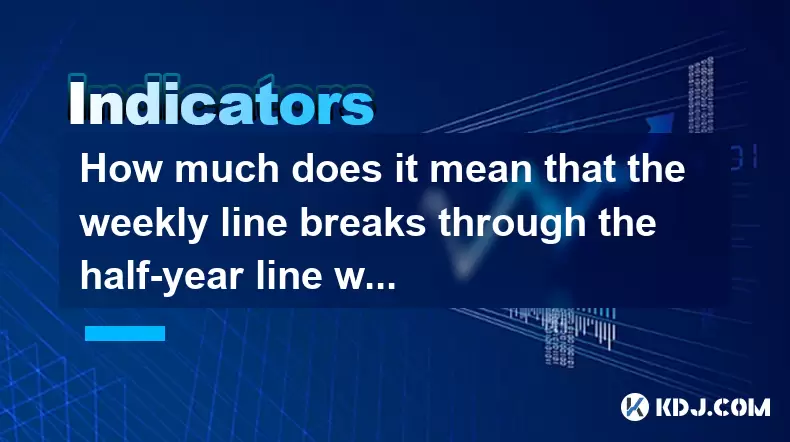
Understanding the Weekly Line Breakthrough of the Half-Year Line
When a cryptocurrency's weekly line breaks through the half-year line with large volume, it signals a potentially significant shift in market sentiment. The half-year line refers to the 26-week moving average, often used by traders as a long-term trend indicator. A breakout above this level suggests that the asset may be entering a new bullish phase.
The large trading volume accompanying this breakthrough is crucial—it confirms the strength of the move. High volume indicates strong participation from institutional and retail investors alike, reinforcing the validity of the breakout. In technical analysis, volume acts as a confirmation tool; without it, breakouts are often seen as weak or false signals.
What Does This Signal Mean for Traders?
A weekly close above the 26-week moving average with increased volume can serve as a strong buy signal for both short-term and long-term traders. Historically, such patterns have preceded sustained rallies in major cryptocurrencies like Bitcoin and Ethereum.
It’s important to note that while this pattern is bullish, it does not guarantee further upward movement. Markets can still retrace or consolidate after such a breakout. Therefore, traders should look for additional confirmation signals before entering positions.
- Watch for continued volume support in subsequent weeks
- Look at the price action around the moving average—does it act as support now?
- Consider other indicators like RSI or MACD to confirm momentum
Can You Add Positions When the Price Pulls Back?
Yes, pullbacks after a breakout can offer excellent entry points, especially if the pullback finds support near the previously broken 26-week line. This strategy is commonly known as "buying the dip" within a larger uptrend context.
However, timing is key. Entering too early during a pullback could result in losses if the support level fails. Here are some steps to consider:
- Wait for the price to retest the 26-week moving average
- Check if the volume on the pullback is lighter than the breakout volume
- Look for candlestick reversal patterns (like hammer, engulfing patterns) near the support zone
- Confirm with oscillators like RSI dipping into oversold territory but not excessively bearish
Adding positions should always be done with a clear risk-reward ratio in mind. It's also wise to use stop-loss orders to protect against unexpected reversals.
Key Technical Levels to Monitor Post-Breakout
After the breakout, certain levels become critical for validating the continuation of the trend. These include:
- The original breakout point—if price returns below this level quickly, it might invalidate the trend
- Previous resistance turned support—areas where the price had struggled before the breakout can now act as support zones
- Fibonacci retracement levels—common pullback levels like 38.2% or 50% can help identify potential entry zones
Monitoring these levels helps traders decide whether to hold, add, or exit positions based on evolving price behavior.
Risk Management When Adding Positions on Pullbacks
Even though pullbacks after strong breakouts can be ideal entry opportunities, risk management remains paramount. Here’s how to approach it:
- Only allocate a portion of your capital when adding on a pullback
- Place stop-loss orders just below the recent swing low or key support level
- Adjust position sizes according to volatility—larger stops may be needed during high volatility periods
- Avoid averaging down blindly—if the pullback turns into a breakdown, reassess the situation
Traders should also avoid emotional decisions. Sticking to a predefined trading plan ensures discipline, especially when markets become volatile or unpredictable after a breakout.
Frequently Asked Questions
Q: What time frame should I use to monitor the pullback after the weekly breakout?
You can use daily or even 4-hour charts to fine-tune entries during the pullback phase. While the breakout was identified on the weekly chart, shorter time frames provide more precise entry triggers.
Q: Is it safe to assume that every breakout with large volume will lead to a rally?
No, not all breakouts result in sustained moves. Some are false signals or “fakeouts.” Always combine volume analysis with price structure and possibly momentum indicators to filter out weak breakouts.
Q: How do I differentiate between a healthy pullback and a trend reversal?
Healthy pullbacks usually exhibit decreasing volume and limited downside movement. Trend reversals often come with increasing volume, bearish candlestick patterns, and violations of key support levels.
Q: Should I only focus on the 26-week moving average, or are there other lines I should watch?
While the 26-week line is a powerful indicator, combining it with others like the 50-week or 100-week moving averages can give a broader perspective. Additionally, monitoring psychological price levels (e.g., round numbers) adds context to the technical picture.
Disclaimer:info@kdj.com
The information provided is not trading advice. kdj.com does not assume any responsibility for any investments made based on the information provided in this article. Cryptocurrencies are highly volatile and it is highly recommended that you invest with caution after thorough research!
If you believe that the content used on this website infringes your copyright, please contact us immediately (info@kdj.com) and we will delete it promptly.
- Pi2Day Disappointment: Why the Pi Network Community Is Losing Faith
- 2025-06-28 18:30:12
- Silver Lining: Robert Kiyosaki's July 2025 Silver Prediction
- 2025-06-28 18:30:12
- Gotta Go Fast! Sonic Speeds into Magic: The Gathering Secret Lair
- 2025-06-28 18:50:12
- Shiba Inu, Price Prediction, Dogecoin Pepe: Meme Coin Mania in 2025
- 2025-06-28 18:50:12
- Genius Group, Bitcoin, and Lawsuit Wins: A New Era for EdTech?
- 2025-06-28 18:42:02
- LILPEPE: The Meme Coin on a Layer 2 Mission to the Moon
- 2025-06-28 18:57:01
Related knowledge
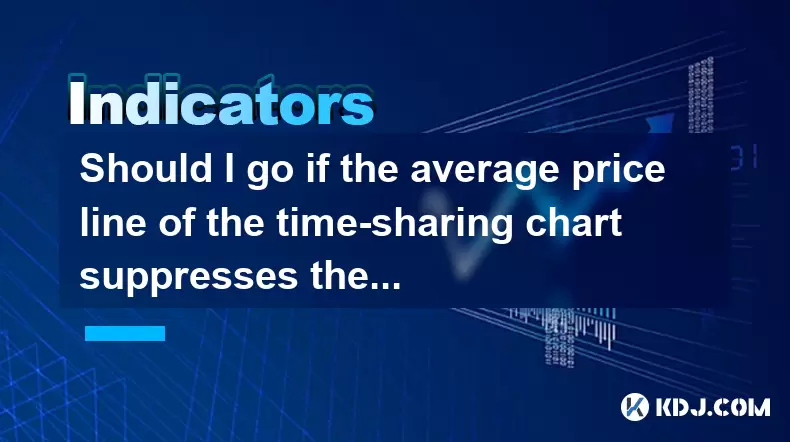
Should I go if the average price line of the time-sharing chart suppresses the rebound?
Jun 28,2025 at 05:14pm
Understanding the Time-Sharing Chart and Average Price LineThe time-sharing chart is a real-time chart used in cryptocurrency trading to visualize price movements over short intervals, typically within a single trading day. It provides traders with insights into intraday volatility and momentum. The average price line, often calculated as a moving avera...
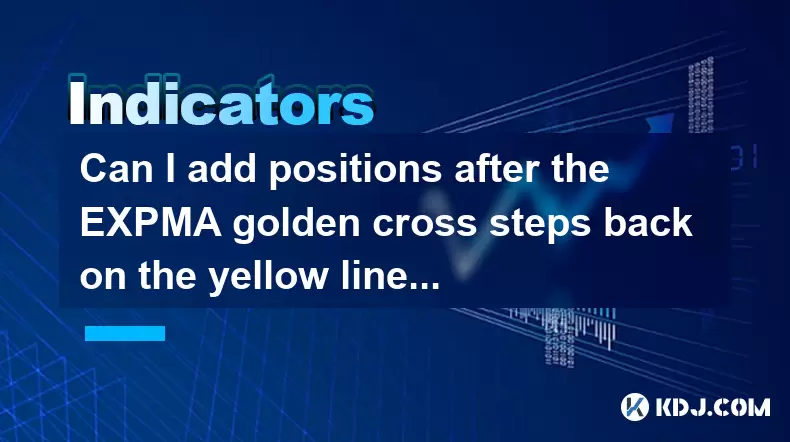
Can I add positions after the EXPMA golden cross steps back on the yellow line?
Jun 28,2025 at 11:57am
Understanding the EXPMA Indicator and Its RelevanceThe EXPMA (Exponential Moving Average) is a technical analysis tool used by traders to identify trends and potential entry or exit points in financial markets, including cryptocurrency trading. Unlike simple moving averages, EXPMA gives more weight to recent price data, making it more responsive to new ...

How to operate the next day after the daily limit is released with huge volume?
Jun 28,2025 at 12:35pm
Understanding the Daily Limit and Its ReleaseIn cryptocurrency trading, daily limits are often set by exchanges to manage volatility or during periods of high market activity. These limits can restrict how much an asset's price can fluctuate within a 24-hour period. When the daily limit is released, it typically means that the price cap has been lifted,...
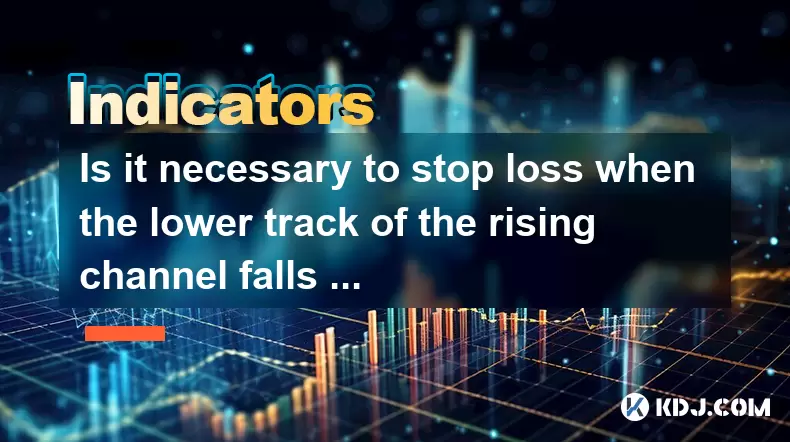
Is it necessary to stop loss when the lower track of the rising channel falls below?
Jun 28,2025 at 05:29pm
Understanding the Rising Channel PatternThe rising channel pattern is a popular technical analysis tool used by traders to identify potential upward trends in asset prices. It consists of two parallel lines: an upper resistance line and a lower support line, both sloping upwards. The price action typically oscillates between these boundaries, offering o...
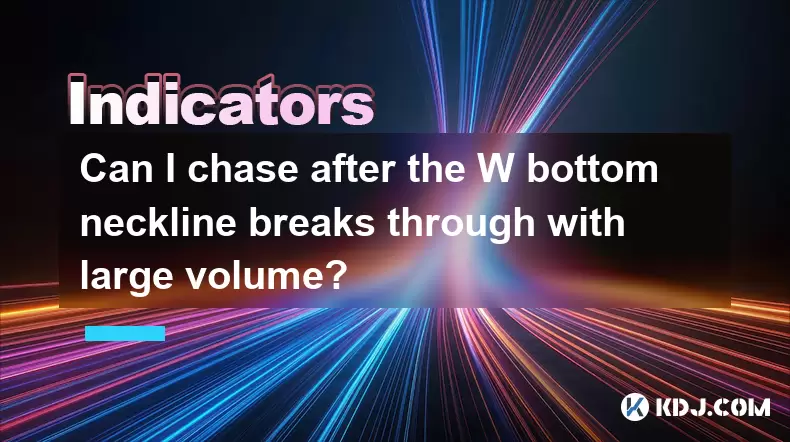
Can I chase after the W bottom neckline breaks through with large volume?
Jun 28,2025 at 07:28am
Understanding the W Bottom Pattern in Cryptocurrency TradingThe W bottom pattern is a common technical analysis formation used by traders to identify potential bullish reversals. In cryptocurrency markets, this pattern typically appears after a downtrend and signals that the selling pressure may be diminishing. The structure of the W bottom includes two...
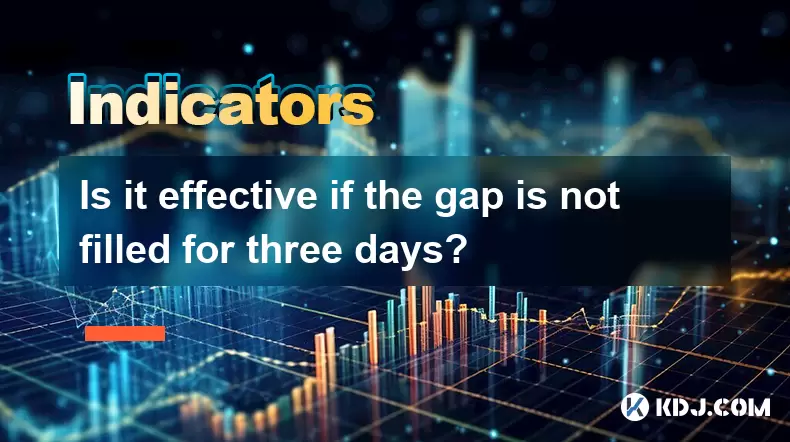
Is it effective if the gap is not filled for three days?
Jun 28,2025 at 01:00pm
Understanding Gaps in Cryptocurrency MarketsIn the context of cryptocurrency trading, a gap refers to a situation where the price of an asset opens significantly higher or lower than its previous closing price, with no trading activity occurring in between. These gaps are commonly observed during periods of high volatility, especially when major news ev...

Should I go if the average price line of the time-sharing chart suppresses the rebound?
Jun 28,2025 at 05:14pm
Understanding the Time-Sharing Chart and Average Price LineThe time-sharing chart is a real-time chart used in cryptocurrency trading to visualize price movements over short intervals, typically within a single trading day. It provides traders with insights into intraday volatility and momentum. The average price line, often calculated as a moving avera...

Can I add positions after the EXPMA golden cross steps back on the yellow line?
Jun 28,2025 at 11:57am
Understanding the EXPMA Indicator and Its RelevanceThe EXPMA (Exponential Moving Average) is a technical analysis tool used by traders to identify trends and potential entry or exit points in financial markets, including cryptocurrency trading. Unlike simple moving averages, EXPMA gives more weight to recent price data, making it more responsive to new ...

How to operate the next day after the daily limit is released with huge volume?
Jun 28,2025 at 12:35pm
Understanding the Daily Limit and Its ReleaseIn cryptocurrency trading, daily limits are often set by exchanges to manage volatility or during periods of high market activity. These limits can restrict how much an asset's price can fluctuate within a 24-hour period. When the daily limit is released, it typically means that the price cap has been lifted,...

Is it necessary to stop loss when the lower track of the rising channel falls below?
Jun 28,2025 at 05:29pm
Understanding the Rising Channel PatternThe rising channel pattern is a popular technical analysis tool used by traders to identify potential upward trends in asset prices. It consists of two parallel lines: an upper resistance line and a lower support line, both sloping upwards. The price action typically oscillates between these boundaries, offering o...

Can I chase after the W bottom neckline breaks through with large volume?
Jun 28,2025 at 07:28am
Understanding the W Bottom Pattern in Cryptocurrency TradingThe W bottom pattern is a common technical analysis formation used by traders to identify potential bullish reversals. In cryptocurrency markets, this pattern typically appears after a downtrend and signals that the selling pressure may be diminishing. The structure of the W bottom includes two...

Is it effective if the gap is not filled for three days?
Jun 28,2025 at 01:00pm
Understanding Gaps in Cryptocurrency MarketsIn the context of cryptocurrency trading, a gap refers to a situation where the price of an asset opens significantly higher or lower than its previous closing price, with no trading activity occurring in between. These gaps are commonly observed during periods of high volatility, especially when major news ev...
See all articles
























































































